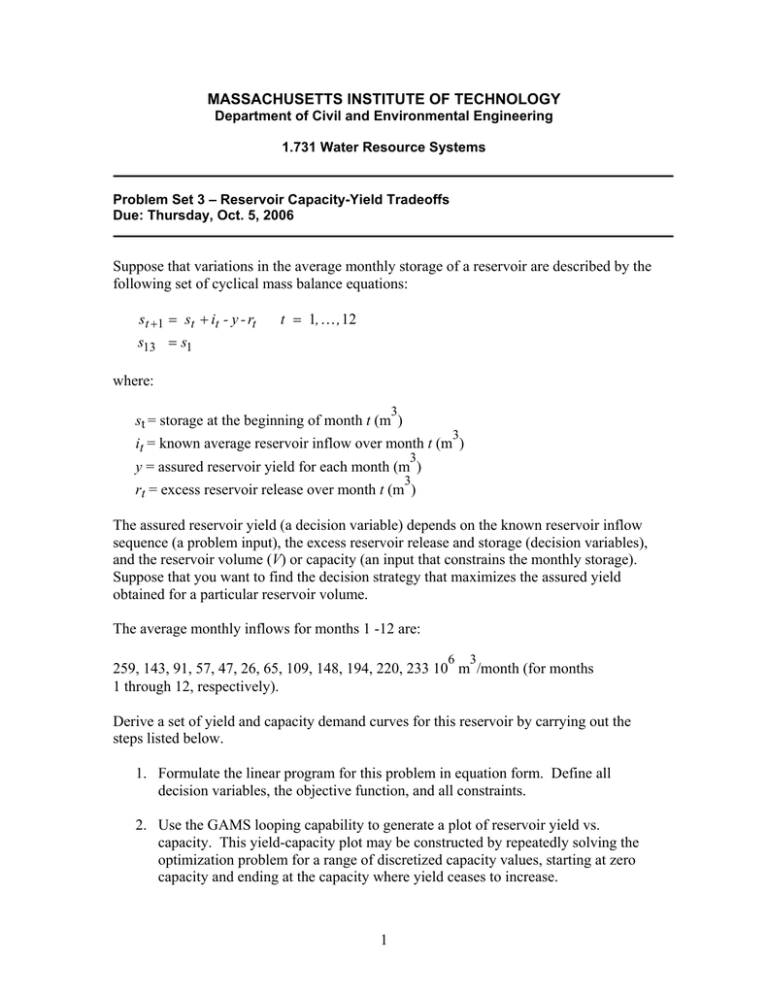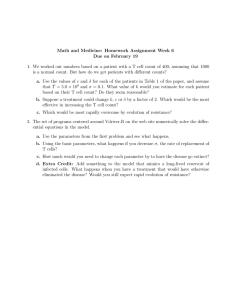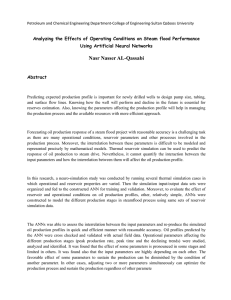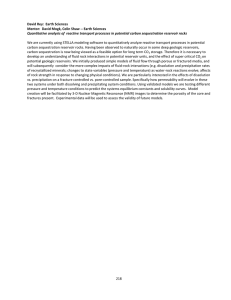MASSACHUSETTS INSTITUTE OF TECHNOLOGY
advertisement

MASSACHUSETTS INSTITUTE OF TECHNOLOGY Department of Civil and Environmental Engineering 1.731 Water Resource Systems Problem Set 3 – Reservoir Capacity-Yield Tradeoffs Due: Thursday, Oct. 5, 2006 Suppose that variations in the average monthly storage of a reservoir are described by the following set of cyclical mass balance equations: st +1 = st + it - y - rt s13 = s1 t = 1, K , 12 where: 3 st = storage at the beginning of month t (m ) 3 it = known average reservoir inflow over month t (m ) 3 y = assured reservoir yield for each month (m ) 3 rt = excess reservoir release over month t (m ) The assured reservoir yield (a decision variable) depends on the known reservoir inflow sequence (a problem input), the excess reservoir release and storage (decision variables), and the reservoir volume (V) or capacity (an input that constrains the monthly storage). Suppose that you want to find the decision strategy that maximizes the assured yield obtained for a particular reservoir volume. The average monthly inflows for months 1 -12 are: 6 3 259, 143, 91, 57, 47, 26, 65, 109, 148, 194, 220, 233 10 m /month (for months 1 through 12, respectively). Derive a set of yield and capacity demand curves for this reservoir by carrying out the steps listed below. 1. Formulate the linear program for this problem in equation form. Define all decision variables, the objective function, and all constraints. 2. Use the GAMS looping capability to generate a plot of reservoir yield vs. capacity. This yield-capacity plot may be constructed by repeatedly solving the optimization problem for a range of discretized capacity values, starting at zero capacity and ending at the capacity where yield ceases to increase. 1 3. The discretization interval should be small enough to properly resolve the shape of the yield-capacity curve. 4. Use the results of your parametric analysis to construct a capacity benefit plot 3 3 which shows how the value (measured in m additional yield/ m additional capacity) of additional capacity changes as capacity increases from zero to its maximum value. 5. Reevaluate the yield-capacity and capacity benefit curves when the low flow 6 3 value occurring in Month 6 is raised to 46 10 m . Give a physical explanation for the result. Prepare a set of easy-to-read plots (using MATLAB, EXCEL, or similar software) which summarize your results. 2






